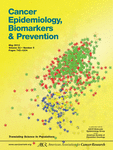CEBP:多运动可降患乳腺癌风险
2013-05-17 佚名 深圳特区报
据新华社消息美国一项临床研究显示,体育运动改变雌激素新陈代谢的方式,因而可降低罹患乳腺癌的风险。这是首项解释运动预防乳腺癌背后机制的临床研究。 运动需要达到一定强度 明尼苏达大学食品科学学院的明迪·库尔策教授主持这项名为“女性稳定运动研究”的临床研究。研究人员征募391名身体健康、习惯久坐的绝经前女性,根据年龄和身高体重指数(BMI)把她们分成两组:212人组成干预组,179人为对
据新华社消息美国一项临床研究显示,体育运动改变雌激素新陈代谢的方式,因而可降低罹患乳腺癌的风险。这是首项解释运动预防乳腺癌背后机制的临床研究。
运动需要达到一定强度
明尼苏达大学食品科学学院的明迪·库尔策教授主持这项名为“女性稳定运动研究”的临床研究。研究人员征募391名身体健康、习惯久坐的绝经前女性,根据年龄和身高体重指数(BMI)把她们分成两组:212人组成干预组,179人为对照组。
研究人员要求对照组在研究期间继续久坐的生活方式,干预组则在16周内每周5次、每次30分钟从事中等强度或更激烈的有氧运动,形式包括在跑步机上跑步、爬楼梯和踩椭圆健身机。
结果显示,干预组研究后期尿样中雌激素代谢产物2—OHE1的水平高于研究初期,另一种雌激素代谢产物16阿尔法—OHE1则低于研究初期。先前研究显示,2—OHE1这种雌激素代谢产物可降低罹患乳腺癌风险。
检测结果还显示,对照组尿样中相关参数水平在研究前、后期未发生变化。
研究结果刊载于美国癌症研究协会所办的《癌症流行病学、生物标志和预防》期刊最新一期。
有氧运动影响分解雌激素方式
美国健康生活新闻网8日援引库尔策的话报道,曾有研究显示运动降低罹患乳腺癌的风险,但没有任何临床研究解释背后的生物机制。
“解释这一现象背后的生物机制具有重要意义,”库尔策说,“这是第一项临床研究显示有氧运动影响人体分解雌激素的方式,生成更多‘好的’新陈代谢产物,减低罹患乳腺癌的风险。”
她说:“众所周知,运动有益保持身材,还能促进心脏健康。我们的研究显示,运动通过改变雌激素的新陈代谢,也可预防乳腺癌。”
库尔策目前正带领研究小组在乳腺癌高危女性中进行类似临床研究。
与乳腺癌相关的拓展阅读:
- 手术可显著降低遗传性乳腺癌的风险
- 抽血检查能助女性发现乳腺癌患病风险
- 安吉丽娜朱莉为防乳腺癌切除双乳
- 多运动可降患乳腺癌风险
- 上海女性选择乳腺切除预防乳腺癌 与朱莉同日手术
- Diabetes Care:二甲双胍或不能改善糖尿病合并乳腺癌患者的生存 更多信息请点击:有关乳腺癌更多资讯

The Effects of Aerobic Exercise on Estrogen Metabolism in Healthy Premenopausal Women
Background
It is well accepted that exercise can decrease breast cancer risk. Limited clinical evidence suggests that this risk could be mediated through changes in estrogen metabolism in premenopausal women. Our objective was to investigate the effects of exercise on premenopausal estrogen metabolism pertinent to breast cancer risk.
Methods
Sedentary, healthy, young eumenorrheic women were randomized into an intervention of 30 minutes of moderate-to-vigorous aerobic exercise five times a week for approximately 16 weeks (n = 212), or into a usual-lifestyle sedentary control group (n = 179). Urinary levels of estrogens [estrone [E1], estradiol, and estriol] and nine estrogen metabolites were measured at baseline and at study end by liquid chromatography/tandem mass spectrometry. The ratios of 2-hydroxyestrone to 16α-hydroxyestrone (2-OHE1/16α-OHE1) and 2-OHE1 to 4-hydroxyestrone (2- OHE1/4-OHE1) were also calculated.
Results
The exercise intervention resulted in significant increases in aerobic fitness and lean body mass and a significant decrease in percent body fat. For exercisers who completed the study (n = 165), 2-OHE1/16α-OHE1 increased significantly (P = 0.043), whereas E1 decreased significantly (P = 0.030) in control participants (n = 153). The change from baseline in 2-OHE1/16α-OHE1 was significantly different between groups (P = 0.045), even after adjustment for baseline values.
Conclusions
The exercise intervention resulted in a significant increase in the 2-OHE1/16α-OHE1 ratio but no differences in other estrogen metabolites or ratios.
原文阅读:Exercise-Related Changes in Estrogen Metabolism May Lower Breast Cancer Risk
May 7, 2013 — Changes in estrogen breakdown, or metabolism, may be one of the mechanisms by which aerobic exercise lowers a woman's breast cancer risk, according to data published in Cancer Epidemiology, Biomarkers & Prevention, a journal of the American Association for Cancer Research.
Observational studies suggest physical activity lowers breast cancer risk, but there are no clinical studies that explain the mechanism behind this," said Mindy S. Kurzer, Ph.D., professor in the Department of Food Science and Nutrition at the University of Minnesota in Saint Paul. "Ours is the first study to show that aerobic exercise influences the way our bodies break down estrogens to produce more of the 'good' metabolites that lower breast cancer risk."
Kurzer and her colleagues conducted the Women in Steady Exercise Research (WISER) clinical trial, which involved 391 sedentary, healthy, young, premenopausal women. They randomly assigned the women to two age-matched, body mass index-matched groups: a control group of 179 women and an intervention group of 212 women.
While women in the control group continued a sedentary lifestyle for the entire study period, women in the intervention group performed 30 minutes of moderate-to-vigorous aerobic exercise five times a week for 16 weeks. Aerobic exercises included the treadmill, stair stepper or elliptical machine. The researchers adjusted the workout intensity for each individual so that the maximal heart rate was uniform among all participants.
Eighty-six percent of participants from the control group and 78 percent from the intervention group completed the study.
The researchers collected 24-hour urine samples on three consecutive days prior to study initiation and on three consecutive days at the end of the study. Using a state-of-the-art technique called liquid chromatography/tandem mass spectroscopy, they measured the amount of three parent estrogens, E1, E2 and E3, and nine of their breakdown products called metabolites, in the participants' urine samples. According to Kurzer, estrogen metabolism favoring the production of a metabolite called 2-hydroxyestrone (2-OHE1) over one called 16alpha-hydroxyestrone (16alpha-OHE1), which results in an increase in the 2-OHE1/16alpha-OHE1 ratio, has been linked with a reduction in breast cancer risk.
She and her colleagues found that aerobic exercise led to an increase in the amount of 2-OHE1 and a decrease in the amount of 16alpha-OHE1, which led to a significant increase in the 2-OHE1/16alpha-OHE1 ratio. There were no changes in the 2-OHE1/16alpha-OHE1 ratio in the urine of control group participants.
"Exercise, known to favor fitness and improve heart health, is also likely to help prevent breast cancer by altering estrogen metabolism," said Kurzer. "It is very important, however, to decipher the biological mechanisms behind this phenomenon."
In collaboration with researchers at the University of Pennsylvania in Philadelphia, Kurzer is conducting similar studies in women with a high risk for breast cancer.
本网站所有内容来源注明为“梅斯医学”或“MedSci原创”的文字、图片和音视频资料,版权均属于梅斯医学所有。非经授权,任何媒体、网站或个人不得转载,授权转载时须注明来源为“梅斯医学”。其它来源的文章系转载文章,或“梅斯号”自媒体发布的文章,仅系出于传递更多信息之目的,本站仅负责审核内容合规,其内容不代表本站立场,本站不负责内容的准确性和版权。如果存在侵权、或不希望被转载的媒体或个人可与我们联系,我们将立即进行删除处理。
在此留言









#乳腺癌风险#
60
#癌风险#
57